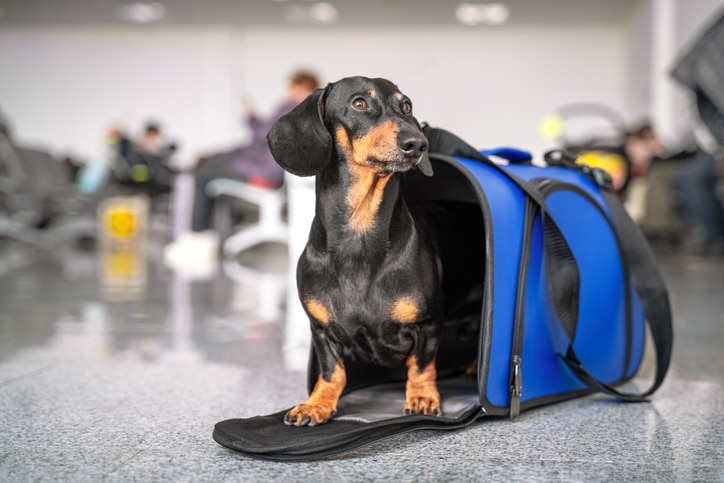Pet owners may find themselves relocating to a new address. Their new residence could be far from home, and they might soon live outside the United States. Transporting a pet domestically involves several responsibilities, and traveling internationally becomes more complex. Rules and laws in the final destination may place added requirements on travelers, and there are safety concerns to consider. Here are five items that pet owners might need to know about when traveling overseas.
Choosing the Right Travel Container
Choosing the least expensive travel container or buying the last one available at the pet store could prove disastrous when checking the pet onto the plane. Airlines require approved travel containers that provide the pet with a decent amount of space. The cases must be hard and not soft ones, either. Soft travel carriers may be fine when transporting a small pet in the cabin, as these soft containers would fit under the seat. Still, the airline would likely have comfort and size requirements even with the smaller cases. Additionally, pets are typically not allowed in the cabin on long flights.
The travel case should be one the regulating authorities approve for airline travel. The size dimensions must offer the proper level of headroom and the ability to move comfortably inside the crate. An undersized travel container would be very uncomfortable for the four-legged family member and cause undue stress. Also, if the container does not meet the airline’s requirements, the airline might refuse to allow the pet onboard.
Unique Airline Requirements
Each airline has specific requirements, and failing to follow those requirements usually means the owner will find the pet cannot get on the plane. Sometimes, owners do not read the list of banned animals. An airline may refuse to transport certain breeds for health and safety reasons. Some animals may not be able to handle long flight distances well, and the airline might request additional paperwork from a veterinarian stating the pet is safe to fly.
The airline could refuse to transport any pets on days when the temperature rises above a specific point on the ground level. Temperatures that are too high or low at any departure, transfer, or destination point may present safety issues. Rebooking the flight might be necessary if the temperature reaches the danger zone. Perhaps reviewing weather conditions or departure times in advance could avoid such problems.
Banned Breeds
While an owner may protest their docile dog is dangerous, airlines won’t label pets dangerous on an individual basis. The airline might not be comfortable flying a particular dog when the breed has a reputation for aggressiveness. So, choosing an airline without reviewing the banned animal list may lead to an unpleasant surprise on flight check-in day.
The Destination’s Domestic Rules
One reason people prefer to use an international pet transport service centers on the company’s ability to handle all necessary paperwork. Each international arrival point may have unique requirements the traveler and the pet must meet. If anything is out of order, the airport at the international destination point may refuse to accept the pet.
A health certificate from a veterinarian might be required, and the certificate would likely need to bear a recent date. Proof of vaccinations is commonly necessary, and the most recent vaccination might have to fall within a set calendar period. For example, the last rabies shot cannot be more than one year old or less than one month. Again, each country has specific requirements.
Quarantine
Quarantine requirements could be in place. In some countries, the owner may pick the pet up right away. In other locations, the pet might face several weeks of mandatory quarantine. A pet that looks sick on arrival may also have to undergo quarantine.
Baggage vs. Cargo
Pet owners should understand the difference between checking a pet as baggage vs. shipping the pet as cargo. The owner and pet travel on the same plane when checking a pet as baggage. Cargo involves shipping a pet on a separate plane. Owners may opt to ship the pet as cargo when working with a transportation service.
Conclusion
Shipping a pet internationally comes with numerous requirements. Pet owners must understand their responsibilities to increase the odds that things move smoothly.

